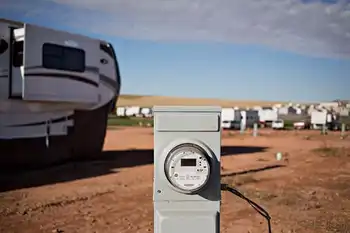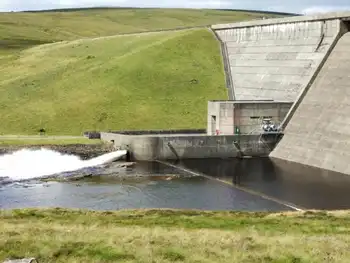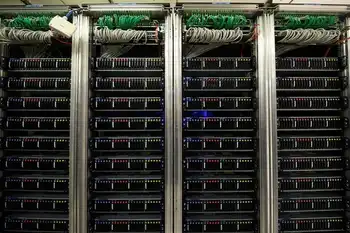Nuclear power to the rescue
WASHINGTON, D.C. - "The only good thing about the good old days is that they're gone." My grandmother's wisdom came from experience. As a teenager in late 19th century Wisconsin, she had cleared tons of rocks from fields and hauled countless buckets of water on the family farm. If she had to select just one modern technology, she said, she'd choose running water. But electricity was a close second.
No wonder. Without electricity, modern life reverts to her childhood: no lights, refrigeration, heating, air-conditioning, radio, television, computers, safe running water, or mechanized equipment for homes, schools, shops, hospitals, offices and factories.
Incredibly, this is what life is still like every day for 2 billion people in developing countries. Viewed at night from outer space, Africa really is the Dark Continent: only 10 percent of its 700 million people regularly have electricity. While 75 percent of South Africa is now fully electrified, only 5 percent of Malawi, Mozambique and other countries are so fortunate. Much of poor and rural Asia and Latin America is in a similar predicament.
Instead of rolling blackouts, neighborhoods have rolling power. "In the western part of my country, families get electricity maybe three hours every two weeks," says Pastor Abdul Sesay, a Sierra Leone native who now resides in Maryland. "Eastern communities get it maybe once a month."
Instead of turning on a light or stove, millions of women and children spend their days gathering wood, grass and dung, to burn in primitive hearths for cooking and heating. Instead of turning a faucet, they spend hours carrying water from distant lakes and rivers that are often contaminated with bacteria.
Pollution from their fires causes 4 million deaths a year from lung infections. Tainted water and spoiled food cause intestinal diseases that kill another 2 million annually. The dearth of electricity also means minimal medical facilities, manufacturing and commerce and impoverished countries forever dependent on foreign aid.
Abundant, reliable, affordable electricity is thus a critical priority for developing nations. Hydroelectric projects offer one solution coal-fired power plants another. They aren't perfect ecologically, but neither are wind turbines, which require extensive acreage, kill birds, and provide inadequate amounts of intermittent, expensive electricity that cannot possibly sustain modern societies.
Now a revolutionary nuclear energy technology is being designed and built in South Africa, but with suppliers and partners in many other nations. The 165-megawatt Pebble Bed Modular Reactors (PBMR) are small and inexpensive enough to provide electrical power for emerging economies, individual cities or large industrial complexes. However, multiple units can be connected and operated from one control room, to meet the needs of large or growing communities.
Process heat from PBMR reactors can also be used directly to desalinate sea water, produce hydrogen from water, turn coal, oil shale and tar sands into liquid petroleum, and power refineries, chemical plants and tertiary recovery operations at mature oil fields.
The fuel comes in the form of baseball-sized graphite balls, each containing sugar-grain-sized particles of uranium encapsulated in high-temperature graphite and ceramic. This makes them easier and safer to handle than conventional fuel rods, says Pretoria-based nuclear physicist Dr. Kelvin Kemm.
It also reduces waste disposal problems and the danger of nuclear weapons proliferation. Conventional fuel rod assemblies are removed long before complete burn-up, to avoid damage to their housings; but PBMR fuel balls are burnt to depletion.
Because they are cooled by helium, the modules can be sited anywhere, not just near bodies of water, and reactors cannot suffer meltdowns. If the chain reaction must be shut down in an emergency, the fuel's residual decay heat dissipates slowly and naturally.
Since PBMRs can be built where needed, long, expensive power lines are unnecessary. Moreover, the simple design permits rapid construction (in about 24 months), and the plants don't emit carbon dioxide.
PBMR technology could soon generate millions of jobs in research, design and construction industries and millions in industries that will prosper from having plentiful low-cost heat and electricity. It will help save habitats that are now being chopped into firewood and improve health and living standards for countless families.
"I met a guy living in the bush who got electricity and promptly started making wooden chairs," Dr. Kemm told me. "Not garden stuff, but perfect Louis XIV chairs, because he could now use electric saws, drills, routers and lathes." It's a story that will be repeated all over, as people gain access to electricity.
Not surprisingly, dozens of companies and countries are keenly interested in PBMR technology, and the first pilot plant will go online in 2011. But assorted special interest groups have lined up against it.
George Soros's Open Society Foundation supports anti-nuclear organizations that oppose PBMR. Danish interests see it as undesirable competition to their wind turbine businesses. Others assert that electricity "destroys" traditional cultures. "If there is going to be electricity," says activist Gar Smith, it should be "decentralized, small and solar-powered."
Poor people everywhere hope these patronizing attitudes will soon be replaced by a recognition that they have an inalienable right to take their place among the Earth's healthy and prosperous people.
Related News

Americans Keep Using Less and Less Electricity
WASHINGTON - By Justin Fox
Economic growth picked up a little in the U.S. in 2017. But electricity use fell, according to data released recently by the Energy Information Administration. It's now been basically flat for more than a decade:
Measured on a per-capita basis, electricity use is in clear decline, and is already back to the levels of the mid-1990s.
Sources: U.S. Energy Information Administration, U.S. Bureau of Economic Analysis
*Includes small-scale solar generation from 2014 onward
I constructed these charts to go all the way back to 1949 in part because I can (that's how far back the EIA data series goes) but…




